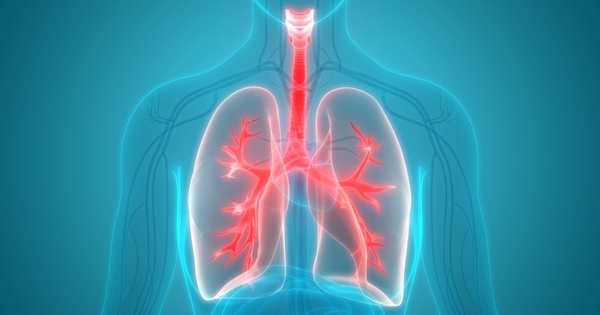Exercise training and yoga can assist persons with asthma improve their lung function. Asthma is a chronic respiratory disease characterized by airway inflammation and narrowing, resulting in symptoms such as wheezing, coughing, and shortness of breath. A new peer-reviewed study reveals that yoga and breathing control practices, combined with aerobic training, are particularly important activities for asthmatic persons looking to enhance their lung function.
The study, published in the journal Annals of Medicine, emphasizes the need of including adequate fitness training into asthma care strategies.
According to lead author Shuangtao Xing, an Associate Professor at the School of Physical Education at Henan Normal University in China, the findings show how beneficial specific types of exercise training may be in improving lung function in adults.
“Breathing training in conjunction with aerobic training and yoga training appear to be particularly beneficial – offering potential avenues for effective treatment approaches,” he says. “Larger, well-designed randomized controlled trials are now needed to more accurately estimate the benefits of exercise training for individuals with asthma.”
These findings should be useful to healthcare professionals prescribing exercise training for the management of adult asthma patients. When establishing exercise rehabilitation programs, it is critical to consider individual aspects such as family history, length of the ailment, and environmental impacts.
Shuangtao Xing
Asthma, a chronic lung condition that affects around 339 million people worldwide, causes symptoms such as coughing, wheezing, shortness of breath and chest tightness.
Exercise was once thought to be a risk factor for people with asthma since it was thought to provoke or worsen acute asthma attacks. Recent research, however, has shown that exercise training can really improve pulmonary function and exercise capacity in adult patients. However, differences in the specific exercise interventions in existing randomized controlled trials (RCTs) have made comparing the effectiveness of different rehabilitation programs difficult.
To address this issue, the current study compares the effects of several types of exercise training on lung function in individuals with asthma using a network meta-analysis, which allows for the simultaneous comparison of results from numerous treatments in a single analysis.

The analysis included a total of 28 RCTs involving 2,155 people with asthma and examined the effects of breathing training, aerobic training, relaxation training, yoga training, and breathing combined with aerobic training, on lung function.
All five types of exercise interventions demonstrated greater effectiveness in improving lung function measurements compared to the conventional rehabilitation control group. Specifically, the study found:
- Breathing training, aerobic training, relaxation training, yoga training, and breathing combined with aerobic training, led to improvements in the levels of Forced Expiratory Volume in the first second (FEV1) levels and Peak Expiratory Flow (PEF).
- Aerobic training, breathing training, yoga training and breathing combined with aerobic training, improved the level of Forced Vital Capacity (FVC).
- Breathing training, aerobic training and yoga training improved the FEV1/FVC ratio.
Furthermore, the researchers applied a statistical technique to rank the effects of different exercise treatments against each other. Relaxation training showed the most significant effect on improving FEV1 levels, breathing combined with aerobic exercise had the most significant effect on improving FVC levels, and yoga training had the most significant effect on improving PEF levels.
“These findings should be useful to healthcare professionals prescribing exercise training for the management of adult asthma patients. When establishing exercise rehabilitation programs, it is critical to consider individual aspects such as family history, length of the ailment, and environmental impacts. Improving treatment outcomes requires tailoring interventions to individual physical and mental health conditions, with careful consideration of exercise intensity, frequency, and duration,” adds Xing.
The authors acknowledge some limitations that could have an impact on the broader generalization of these findings, such as inherent variability amongst the included studies and variations in exercise intensity and frequency information. They emphasize that the majority of patients in the trial were under 60 years old, implying that exercise programs may produce different results in older people.
















